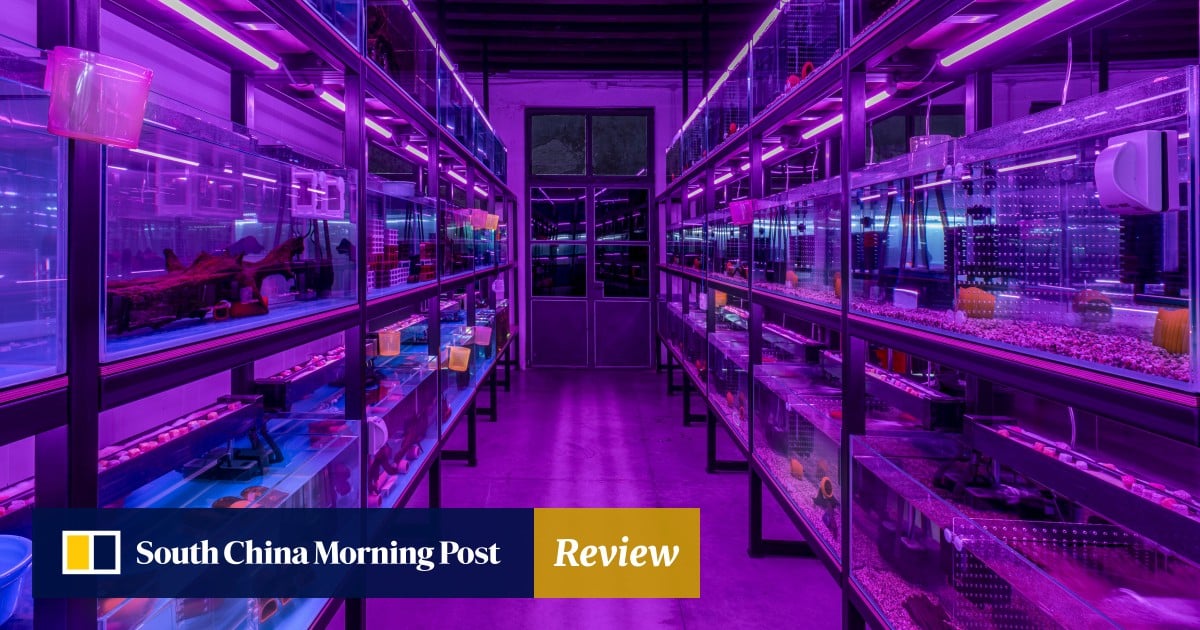This is a piece of Hong Kong that Yeung has brought to Venice – it is what you would see in a typical tropical-fish shop in Hong Kong, the 36-year-old’s favourite hang-out since childhood.
Hong Kong does not qualify for a national pavilion in the so-called Olympics of the art world, held every other year since 1895, but it has been a collateral event since 2001.
Regularly occupying a prime spot just outside the main entrance to the Arsenale exhibition site, the “Hong Kong in Venice” biennale exhibition is where Hong Kong artists and curators present a highly visible project that should tell the international audience something about their city.
Venice starts charging day trippers €5 – US$5.30 – for entry from Thursday
Venice starts charging day trippers €5 – US$5.30 – for entry from Thursday
Yeung’s previous exhibition in Hong Kong saw him delving into the unwritten behavioural code of a London gay cruising ground and drawing unexpected parallels with the Lam Tsuen Wishing Tree in the city’s New Territories.
For Venice, he decided, together with curator Olivia Chow, the strategy was to return to a more self-referential approach and introduce some of the coded symbols that he has nurtured over the years with the same care and attention to detail that is required for his pet fish: namely the fish tanks and the mushroom-shaped night lights.
The “cave” of fish tanks in the last room and a large fountain made up of even more fish tanks in the courtyard entrance are more likely to stop biennale-goers in their tracks. But everyone attending opening week should see a bit of themselves in the Little Comfy Tornado installation.
For Yeung, it is a symbol of the colossal machinery created around what individual artists do – best witnessed at a biennale of this scale, where the wheels are greased by countless behind-the-scene transactions.
The work consists of a small, transparent glass tank filled almost to the brim with clear water and perched on a delicate, wooden pot stand placed on top of a more solid one.
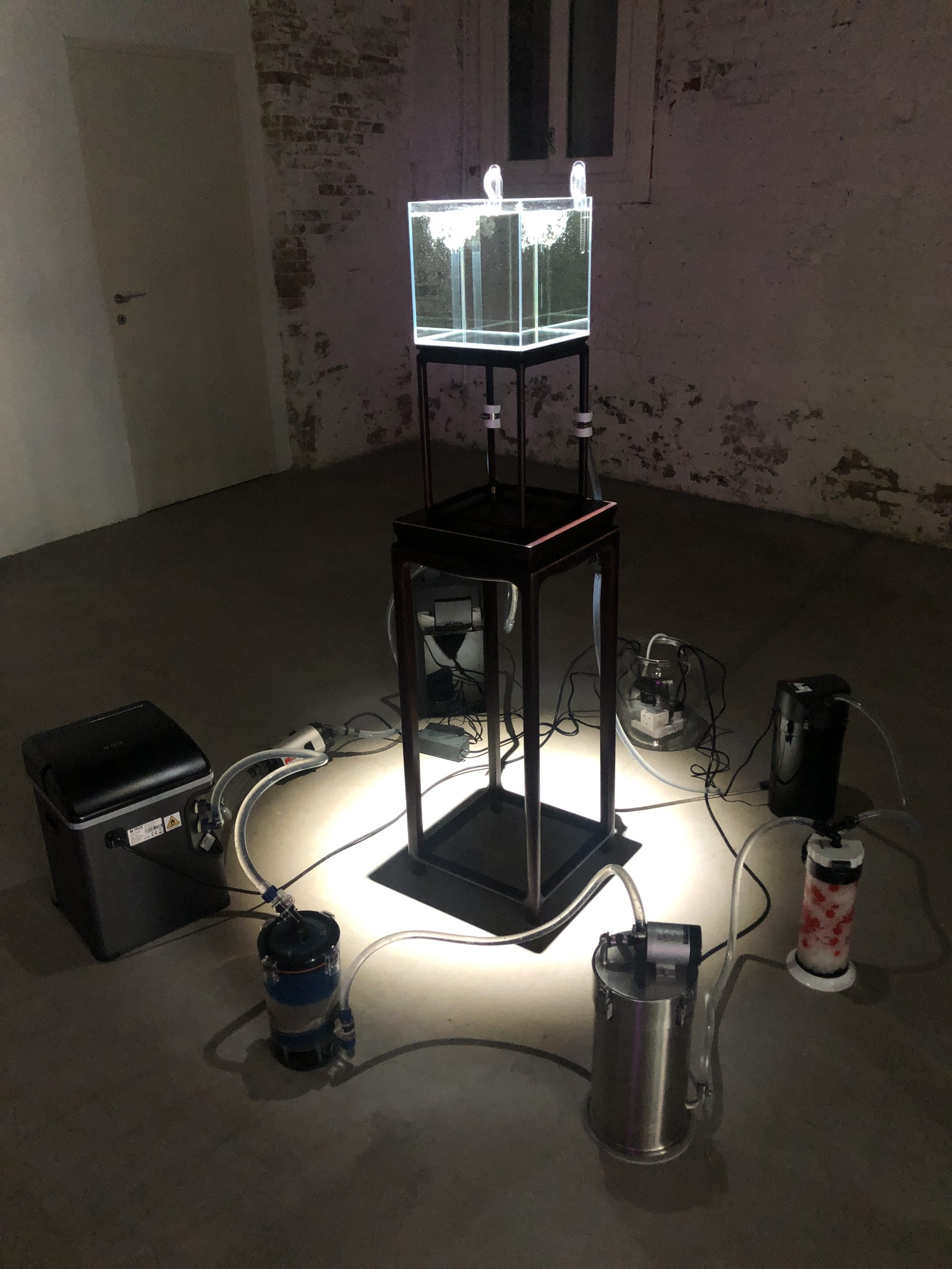
This unremarkable tower is cordoned off by an assortment of eight industrial-size aquarium filtration systems on the floor, neatly arranged in a circle and connected with clear plastic tubes.
Their motley looks and excessiveness – they are far too big for such a small tank – destroy any sense of harmony that the symmetry of the arrangement might have lent.
Finally, a transparent circulation pump creates the little “tornadoes” in the water that lend the work its title.
For Yeung, the sediments symbolise the amount of care and management often required of any man-made system, as well as the imperfections and unpredictable outcomes that cannot be prevented by the most calculated and powerful apparatus.
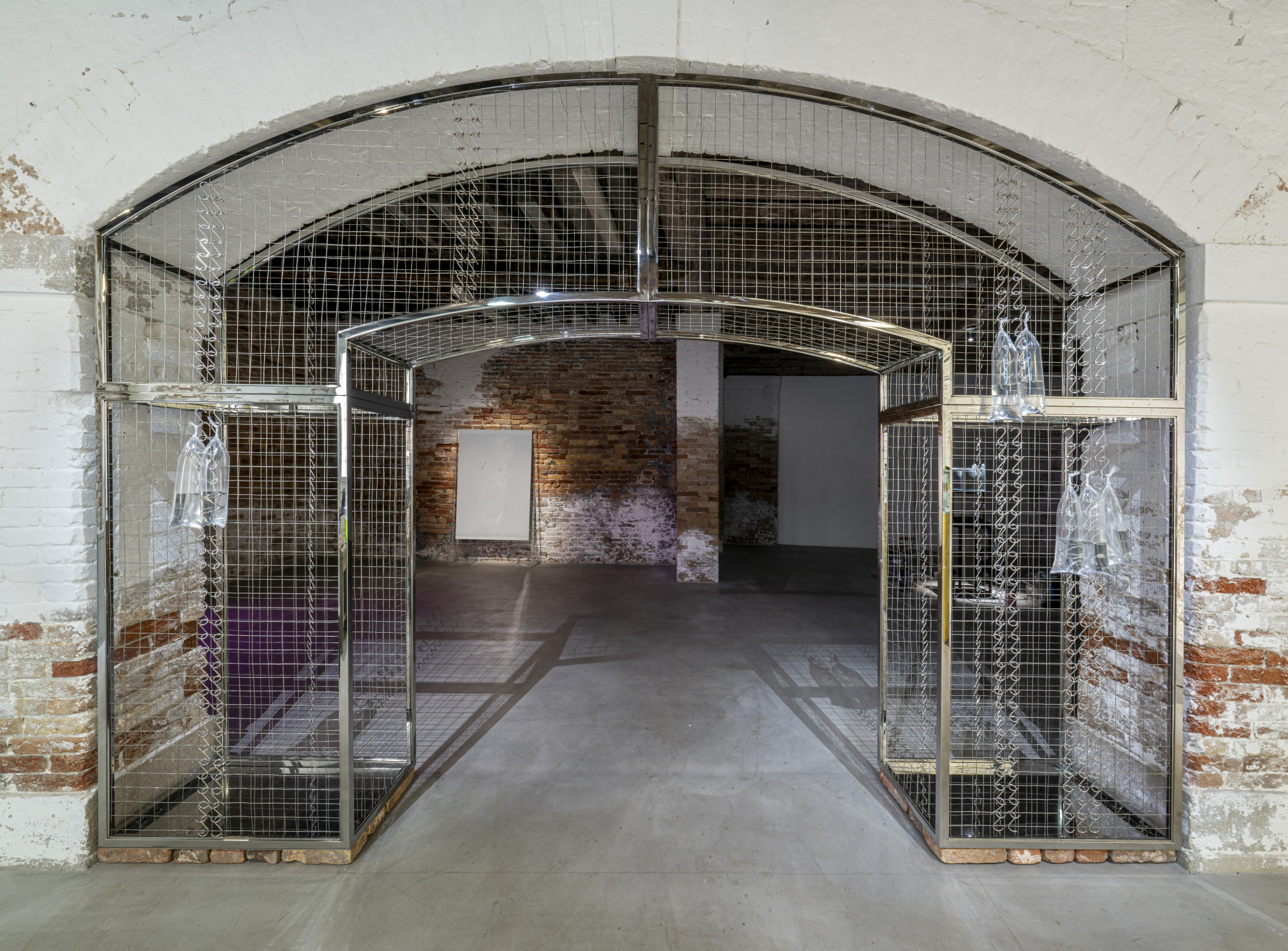
As for the “little” tornadoes that are meant to supply vital oxygen to the fish tank, Yeung asks visitors to imagine how a fish would find them.
From the perspective of the tank’s intended resident, they would be more like giant twisters, which could explain why that tank is uninhabited.
Yeung’s long-standing critique of anthropocentrism stems partly from the guilt of keeping pet fish – which sees the owner playing god and creating a mini world for the fish that requires a great deal of human intervention.
He shared his intimate knowledge of fish-related biohacking tricks as he took me through the Cave of Avoidance (Not Yours), the room with all the fish tanks (which are all empty of fish), pointing out how different furniture, lights and water colour would encourage certain behaviours in different breeds.
There is a forlorn air in that room of many tanks and no fish – the stacks of empty ceramic breeding tunnels resemble ghost towns of empty residential blocks, or towns abandoned because of war. But there is life of a different kind in the tanks.
South Korean artist and Loewe model on her 2024 Venice Biennale pavilion
South Korean artist and Loewe model on her 2024 Venice Biennale pavilion
In one, a kind of marine algae has attached itself to a volcanic rock and it is thriving, its delicate fronds performing a mesmerising dance and having its time in the limelight.
Algae is an aquarist’s enemy. There are all sorts of products out there to help keep fish tanks pristine. But these incredible organisms produce oxygen and are a source of food for fish.
It is a symbol of a natural ecosystem and the opposite of the kind of overweening and destructive intervention seen in Little Comfy Tornado.
Out in the courtyard, there are signs of a meddlesome aquarist reformed. Mx. Trying-My-Best (2024) is a group of construction waste bins with solar-powered water pumps attached. Among the rubble and discarded metal tools, lotuses introduced by Yeung are growing.
Here, the pump action is barely visible, just enough to keep mosquitoes from breeding and to aerate these makeshift ponds.
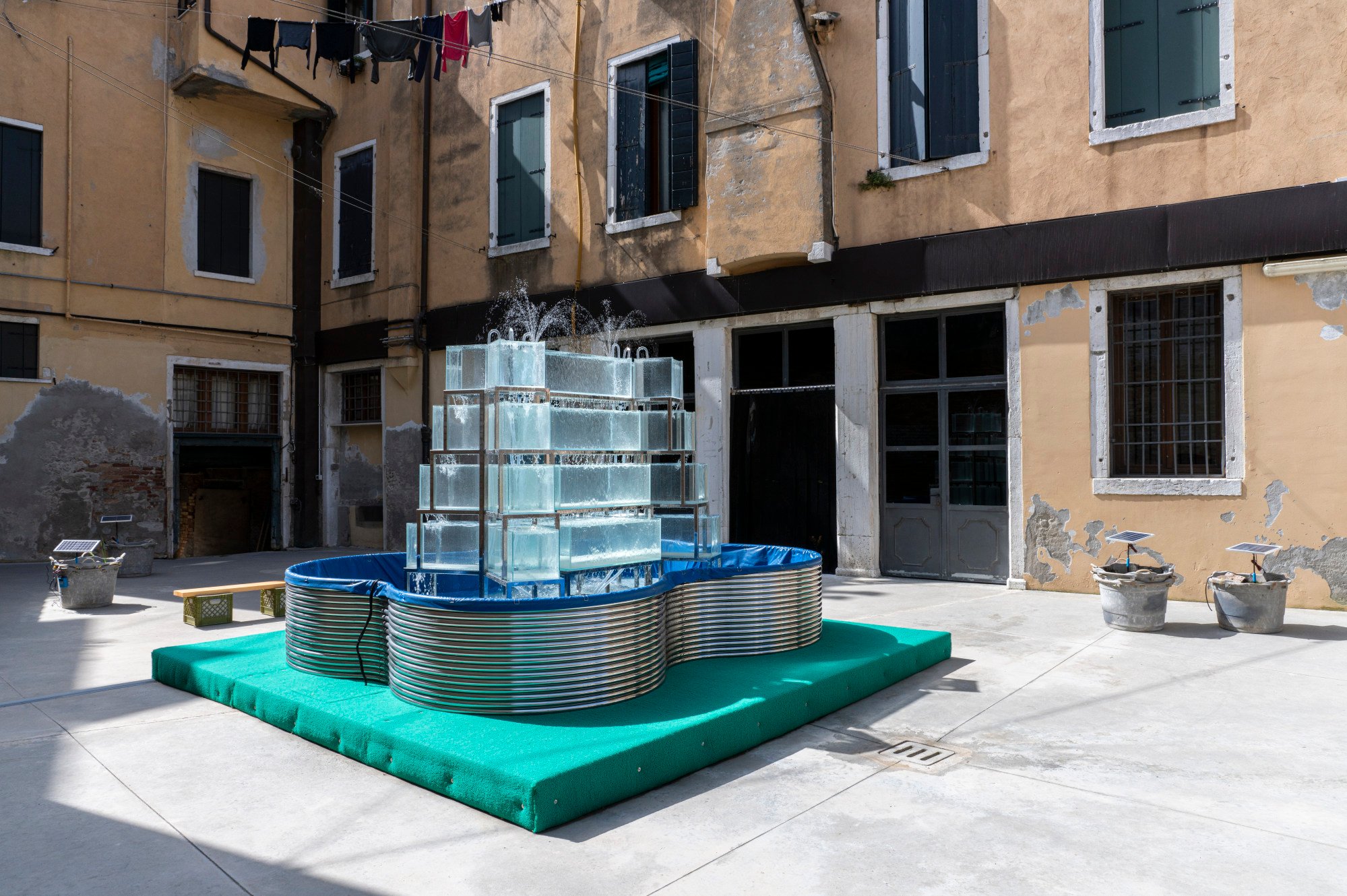
An even subtler intervention is the creation of two impromptu greenhouses. The team had brought over spare glass tanks in case of breakage, and Yeung has placed two of them over a patch of weed that is growing through a crack in the concrete-covered ground, and a pile of rubble with no visible sign of life, yet. It will be interesting to see what is growing inside them in a few months’ time.
Yeung, who is also a keen horticulturist, tends to caution against the treatment of plants and fish in his works simply as metaphor, just as a painter would wish viewers to look beyond iconography. But there is always the sense that nature points the way (even if through gentle nudging by the artist).
And so, in the first room, we see a lovely example of humans exhibiting the same adaptability and stubbornness as the lotus and the algae.
Two Unwanted Lovers (2024), an assemblage of used tables, used office cabinets and aquarium paraphernalia, is a work that doubles as the reception area for the exhibition.
The two tables salvaged in Hong Kong are mismatched yet familiar. The wooden table and the metal office desk are the durable kinds favoured by security guards in Hong Kong buildings. A photo of pet piranhas is stuck on the metal table top – just like the way security guards or bus station masters personalise found furniture to reshape their very public work spaces in their idea of home.
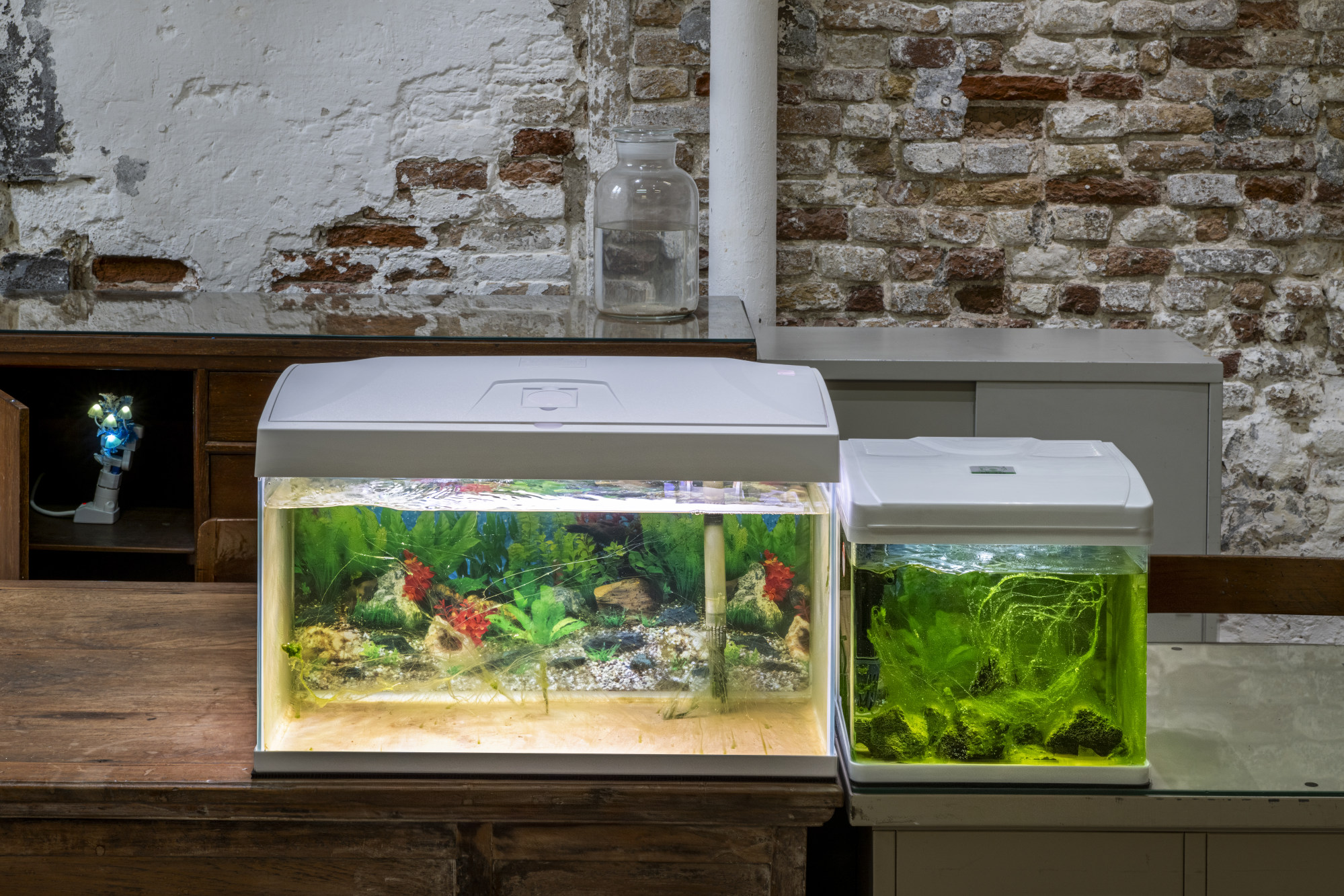
These are acts that blur the private and the public and subvert the very basis of an ultra-capitalist society such as Hong Kong.
Behind the member of staff stationed at the desks, a cabinet door is deliberately left open to reveal one of Yeung’s signature mushroom-shaped night lights. Called Night Mushroom in shade (Teak Cabinet) (2024), its gentle, pastel glow summons the viewer to transgress, to take a step into that forbidden zone behind the front desk.
Yeung never directly discusses links between his work and today’s Hong Kong, but the city is very much present here, beyond physical reminders such as the replica of the tropical fish shops in Mong Kok’s “Goldfish Street”. (A bare metal frame with empty tubes of water hanging from it is another element taken from the shops, laying bare our insatiable appetite for commoditised lives.)
The empty tanks bring to mind the wave of emigration after 2019 and the city’s low birth rate. And Little Comfy Tornado reflects the rapid introduction of new laws, red lines and methods of control that are causing unease in Hong Kong while the government issues repeated reassurances that they are driven by a utopian vision – the pristine fish tank sitting on top.
If that is a nod to troubles at home, the lotus, the algae and the front desks serve to liberate the meaning of home from one that is closed and exclusive.
This Chinese illustrator is healing people through her art
This Chinese illustrator is healing people through her art
More broadly, Yeung has a habit of emancipating meanings locked inside the mundane and celebrating personal attachments and memories as a way to defy conventional value systems.
The exhibition title, “Courtyard of Attachments”, alludes to the role of attachments that we form with people and things that are utterly personal, defy distinctions between private and public and are often incomprehensible to others.
That rather unsightly water fountain in the courtyard is the opposite of the grand, baroque fountains seen in old European cities such as Venice but it is a monument nonetheless: it is based on the fish tanks used by Yeung’s father when he owned a seafood restaurant in Shenzhen.
Across the border from Hong Kong, it is a place where Yeung used to spend a lot of time when he was a child. Here, too, is a nod to diasporic experiences and a sense of alienation that echoes the Venice Biennale’s theme this year of “Foreigners Everywhere”.
Yeung used to put his beloved fish in his work. Live in Hong Kong, Born in Dongguan (2015), shown in the exhibition “A Hundred Years Of Shame – Songs of Resistance and Scenarios for Chinese Nations” at Hong Kong art space Para Site, featured six kinds of fish that had to be kept in very different kinds of environments, a symbol of how he felt like a fish out of water when he first moved with his family from mainland China to Hong Kong as a boy.
Got any of your pet’s fur to spare? This Hong Kong artist wants it
Got any of your pet’s fur to spare? This Hong Kong artist wants it
When asked about the conspicuous absence of fish in this and other recent exhibitions, Yeung says he does not want them to become a distraction as he creates situations that invite the audience to consider the systems and power structures that control our world.
How has this highly nuanced exhibition gone down?
I think the messages are far too muffled for the Venice crowd as they try to see as many of the more than 100 shows as possible in a limited time. But for someone from Hong Kong, I feel there is too much to take in.
There are excesses such as Rolling Gold Fountain (2024), a stripped-down version of a common feng shui device and a brilliant deconstruction of human folly, that seems to go off on a tangent and should have been edited out.
But Yeung is an artist intent on upsetting conventions – and as his Instagram handle, @plantertrevor, denotes – his loyalty is with the plants.
“Trevor Yeung: Courtyard of Attachments”, Hong Kong in Venice, Campo della Tana, Castello 2126, 30122, Venice. Until November 24.

